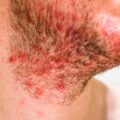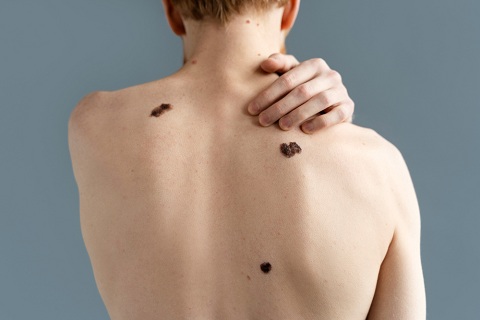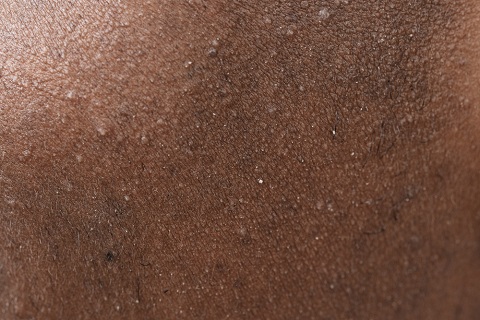Tinea cruris, commonly known as jock itch, is a fungal infection that affects the groin area.There is intense itching. In early stage there are maculopapules which spread to the periphery redness, itching, and a distinct rash that often spreads in a circular pattern. While it’s not usually serious, tinea cruris can be uncomfortable and persistent if not treated properly. In this comprehensive guide, we’ll delve into the causes, symptoms, and various treatment options available for managing this condition effectively.
What Causes Tinea Cruris?
Tinea cruris is primarily caused by a group of fungi known as dermatophytes. These fungi thrive in warm, moist environments, making the groin area an ideal breeding ground. It is contacted from infected clothing or articles. Factors that can contribute to the development of tinea cruris include:
- Poor Hygiene: Inadequate hygiene practices, such as wearing sweaty or damp clothing for extended periods, can create an environment conducive to fungal growth.
- Tight Clothing: Wearing tight-fitting clothing, particularly underwear and athletic gear, can trap moisture and heat, promoting fungal overgrowth.
- Shared Spaces: Sharing towels, clothing, or sports equipment with someone who has a fungal infection increases the risk of transmission.
- Weakened Immune System: Individuals with weakened immune systems, such as those with HIV/AIDS or diabetes, are more susceptible to fungal infections like tinea cruris.
Recognizing the Symptoms
Identifying tinea cruris early is crucial for effective treatment. The hallmark symptoms of jock itch include:
- Redness: The affected skin may appear red or pinkish in color.
- Itching: Persistent itching in the groin area is a common symptom of tinea cruris. The itching may worsen with sweating or friction.
- Rash: A raised, circular rash with well-defined edges may develop. The rash can spread to the inner thighs, buttocks, and genital area.
- Burning Sensation: Some individuals may experience a burning or stinging sensation in the affected area.
It’s essential to differentiate tinea cruris from other skin conditions, such as eczema or psoriasis, as the treatment approach may vary.

Prevention Tips
Preventing tinea cruris involves taking proactive measures to minimize the risk of fungal overgrowth. Here are some preventive tips:
- Practice Good Hygiene: Shower regularly, especially after sweating, and thoroughly dry the groin area afterward. Dry the groin area thoroughly after bathing.
- Change Clothing Promptly: Avoid wearing sweaty or damp clothing for prolonged periods, and change out of wet swimwear promptly.
- Use Antifungal Powders: Applying antifungal powders, particularly in areas prone to sweating, can help keep the skin dry and inhibit fungal growth.
- Avoid Sharing Personal Items: Refrain from sharing towels, clothing, or personal grooming items with others, especially if they have a fungal infection.
- Wear Loose-Fitting Clothing: Opt for loose, breathable clothing made of natural fibers to allow air circulation and minimize moisture buildup.
By incorporating these preventive measures into your daily routine, you can significantly reduce the risk of developing tinea cruris and other fungal infections.
Here are the FAQs answered concisely
Tinea cruris can be effectively treated and managed, but it may recur if preventive measures are not followed consistently. While some cases may require long-term management, a permanent cure is possible with proper treatment and lifestyle changes.
The duration of tinea cruris can vary depending on the severity of the infection and the effectiveness of treatment. With appropriate treatment, symptoms typically improve within a few weeks. However, it’s essential to complete the full course of medication to prevent recurrence.
Tinea cruris is generally not considered a serious health condition, but it can cause discomfort and affect quality of life if left untreated. In rare cases, complications such as secondary bacterial infections may occur. Prompt treatment and preventive measures can help manage the condition effectively.
Yes, tinea cruris can spread through direct contact with infected skin or contaminated objects, such as towels, clothing, or sports equipment. It’s essential to practice good hygiene and avoid sharing personal items to prevent transmission.
To prevent the spread of tinea cruris, it’s crucial to practice good hygiene habits, such as keeping the affected area clean and dry, avoiding sharing personal items, and wearing clean, breathable clothing. Prompt treatment of existing infections and avoiding close contact with infected individuals can also help prevent transmission.
While there is no guaranteed home remedy for permanently curing tinea cruris, several self-care measures can help manage the condition effectively. These include keeping the affected area clean and dry, applying over-the-counter antifungal creams or powders, wearing loose-fitting clothing made of natural fibers, and practicing good hygiene habits. In severe or persistent cases, seeking medical advice for prescription medications may be necessary for complete resolution.
Conclusion
Tinea cruris, or jock itch, is a common fungal infection that affects the groin area. While it can be uncomfortable and persistent, it’s treatable with the right approach. Understanding the causes, recognizing the symptoms early, and adopting effective treatment and prevention strategies are essential for managing this condition successfully.





